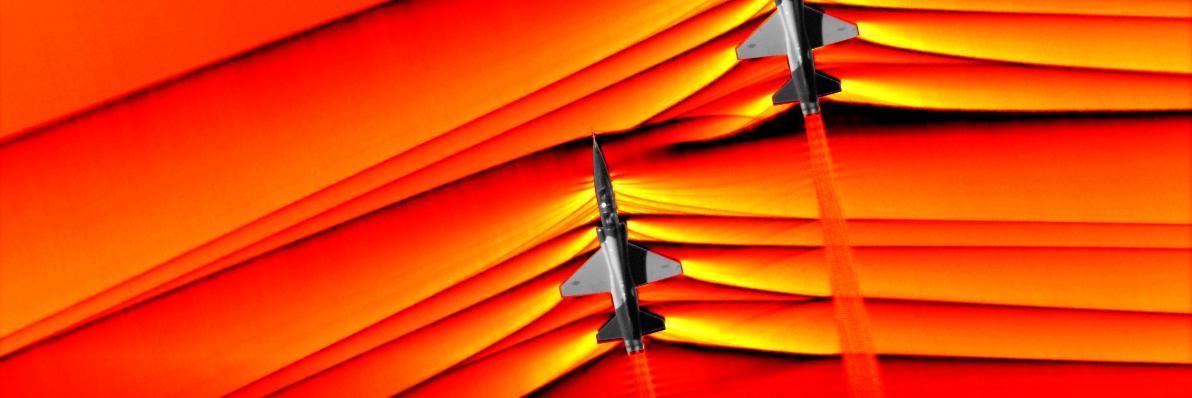
NASA Armstrong
@NASAArmstrong
The Armstrong Flight Research Center is NASA's primary center for atmospheric flight research & operations. Verification: http://nasa.gov/socialmedia
Preparing today for tomorrow's mission! ⭐ Supersonic flight, next generation aircraft, advanced air mobility, climate changes, human exploration of space, and the next innovation are just some of the topics our teams focused on in 2024. 🔗: go.nasa.gov/3DrkqOW
From auto shops to aerospace. After a decade in the auto industry, Saré Culbertson is now a NASA Pathways intern, helping test electric air taxis and ensuring GPS navigation is safe for flight. 🔗: go.nasa.gov/4eqqFkn #UrbanAirmobility #PathwaysIntern #Engineering #NASA


Thermal Engineering Day Spotlight🔥 At NASA Armstrong’s Flight Loads Laboratory, engineers push structural components – and even entire flight vehicles – to their limits, applying extreme heat, cold, and mechanical stress to simulate the harsh conditions experienced during…
NASA engineers are testing how mobile networks based on 5G standards and technologies could support the future of air taxis. Using specialized radios and flight tests, the team is studying how to keep aircraft connected in city skies. Learn how current networks might power…




#OTD in 1969, #Apollo11 touched down on the Moon. Later that day, NASA astronauts Neil Armstrong and Buzz Aldrin became the first humans to walk on the lunar surface. Flight tests for the Lunar Landing Research Vehicle (LLRV) took place at NASA's Flight Research Center, now…


Let the taxi tests begin! ✈️
The X-59 is ON THE MOVE!👏 @NASA's X-59 quiet supersonic research aircraft has successfully completed its first low-speed taxi test, moving under its own power for the very first time! This is the last series of ground tests for the X-59 to complete before first flight.✈️…
#OTD in 1970, the HL-10 made its final flight. The HL-10 was one of five aircraft built in the Lifting Body program. The HL-10 was flown 37 times during the program and logged the highest altitude (90,030 feet) and fastest speed (Mach 1.86 or 1,228 mph). The HL-10 helped…




NASA Armstrong's C-20A (Gulfstream III) science aircraft flew over the Guadalupe, San Gabriel, and Colorado River basins with specialized instruments onboard to assist after destructive flooding in Texas. Read more: go.nasa.gov/4nIE5fM

What historic moment laid the foundation for international space partnerships? #OTD in 1975, the U.S. Apollo spacecraft launched with a crew of three astronauts as part of the Apollo-Soyuz Test Project, the first international crewed space mission. Just days later, they…




More than 400 curious and excited kids visited NASA Armstrong for Bring Kids to Work Day! ⭐ From dressing up like astronauts and pilots to diving into hands-on STEM activities, these young explorers got a behind-the-scenes look at life at a NASA flight research center. They…




Happy Independence Day from all at NASA Armstrong! 🇺🇸 🎆 Learn more here: go.nasa.gov/4lu9Ya0
Comfort matters, especially when you're flying! NASA is conducting a series of studies to understand how air taxi motion, vibration, and other factors affect ride comfort.✅ The data will help guide industry and others with design & operational practices for future air…
Bye-bye bulky wires 👋 NASA's Fiber Optic Sensing System (FOSS) is changing how we measure temperature and strain placed on vehicles during high-speed flight.💥 Instead of traditional wire harnesses and sensors, this system uses a fiber no thicker than a strand of hair to…
Before the full-sized M2-F2 and Hyper III experimental aircraft took to the skies, engineers at what is now @NASAArmstrong tested models launched from a remote-control mothership (yellow). Can you distinguish the Hyper III shapes from the M2-F2 in this photo taken #OTD in 1968?
On June 23, the @VardaSpace W-4 capsule launched aboard @SpaceX's Transporter 14 mission. Protected by a heat shield Varda made using tech developed by @NASAAmes, W-4’s re-entry to Earth will test the shield’s innovative materials at temps up to 7,000°F: go.nasa.gov/446Lqg4
Ready for an air taxi ride? NASA is studying what makes future air taxis comfortable – or not. By testing how passengers react to motion, sound, vibration, and design, the agency is collecting data to help the industry build aircraft people will want to ride again and again.…
From human computers to project managers, @NASAArmstrong honors the many women who’ve contributed to NASA’s mission. Today is International Women in Engineering Day, so make sure to read about some of our women engineers here: go.nasa.gov/43YTdhr

#OTD in 1961, Major Robert M. White was the first pilot to exceeded Mach 5 in an aircraft. Flying the X-15, White reached an altitude of 107,700 feet and a speed of 3,603 miles per hour. The highly successful X-15 program provided valuable data that contributed to the…

On June 13, UP Aerospace's Spyder #hypersonic rocket successfully launched for the first time! Developed with support from @NASA_Marshall and our Flight Opportunities program, Spyder can test re-entry systems at hypersonic speeds. Get the details: go.nasa.gov/4edsBgc
Engineers at NASA are pushing the limits of what temperature and strain measurement systems can do without adding much weight. The secret? A fiber thinner than a strand of hair. Developed by NASA Armstrong, the hypersonic Fiber Optic Sensing System (FOSS), collects critical…
The M2-F2 lifting body arrived at what is now @NASAArmstrong #OTD 60 years ago, and made its first flight a year later. (Yes, this is the one that crash landed in May 1967 as seen in the opening credits of a certain TV show.) go.nasa.gov/3ZqW5AU